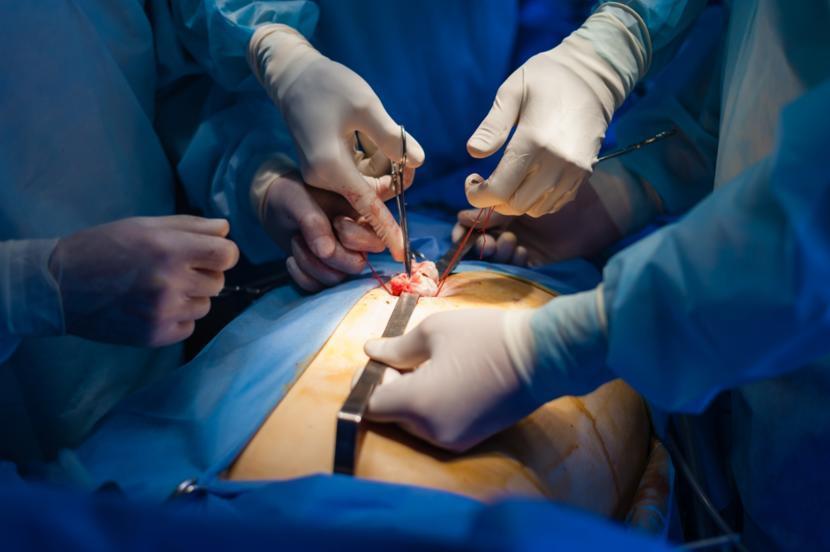Everything You Need to Know About a Cholecystectomy

Cholecystectomy is a surgical procedure performed to remove a damaged gallbladder. The gallbladder is a small pouch-like organ found in the upper right part of your belly. The main function of the gallbladder is to store bile, which is a digestive fluid used in the breakdown of fats. Specifically, bile helps by breaking down fats into smaller fat droplets to increase the surface area of digestion. This process is called as "emulsification." Bile is synthesized in the liver and then released in the gallbladder for storage.
The gallbladder is an important organ in the body, although you don’t need it to survive. The surgical removal of your gallbladder is always recommended in case complications that cause you pain may arise.
Reasons Why You Have to Remove Your Gallbladder
Cholecystectomy or the surgical procedure used to remove your gallbladder is usually carried out when you have an inflamed gallbladder caused by gallstones. Gallstones are tiny stones that are formed due to an imbalance of chemical substances that make up your bile. Having gallstones may not cause you any pain symptoms. For this reason, you may not realize that you have them unless they block your bile ducts causing inflammation to your gallbladder or the pancreas. The inflammation of your gallbladder or pancreas as a result of gallstones are called acute cholecystitis and acute pancreatitis, respectively.
Acute cholecystitis and acute pancreatitis may cause symptoms such as:
- a general feeling of being sick
- sudden and deep pain in your tummy
- jaundice (the yellowing of your eyes, tongue, and skin)
You can take some medications to help dissolve the gallstones, but having a cholecystectomy to permanently remove your gallbladder is the most effective treatment in many cases.
Cholecystectomy Procedure
This surgical procedure is mostly done to remove gallstones and is performed in two different ways: the laparoscopic cholecystectomy and open cholecystectomy.
1. Open Cholecystectomy
Open cholecystectomy is a traditional surgical procedure, which involves an incision on the upper right part of your abdomen to remove the gallbladder. A slant incision can also be made on the lower right side of your ribs. In this procedure, the peritoneum (the membrane that lines the abdominal cavity) is cut to successfully remove your gallbladder. Once the gallbladder is removed, the incision is closed with stitches. Drains are also used to prevent fluid accumulation on the incision site. Open cholecystectomy procedure will always take about 2 to 3 hours. If this procedure has no complications, you will stay in
An open cholecystectomy procedure usually takes about 2 to 3 hours. If there are no complications after your surgery, you will only be confined for the duration of 1 to 3 days and will soon be discharged. At home, your expected recovery time is about four weeks to get back to your normal life. If any complications arise after the operation, your recovery will take longer for about 4 to 8 weeks.
2. Laparoscopic Cholecystectomy
Also called as “lap choly,” laparoscopic cholecystectomy is the latest procedure used around the world. In this procedure, your surgeon will make four small incisions, cutting less than half an inch. One is made on the bottom of your belly, two on the right side just below your ribcage and one on the upper portion slightly below your breastbone.
A tube is then inserted into one of the incisions and then the abdominal cavity is filled with carbon dioxide gas to help inflate the belly so that the surgeon can see inside during the surgery. A laparoscope is then inserted through another incision. A laparoscope is a long tube fixed with a tiny video camera and light at the apex. The video camera is usually connected to a monitor, where your surgeon will get a clear view of your gallbladder during its surgical removal. The other two incisions are used to insert different instruments to hold and remove the gallbladder. Once the gallbladder is removed, carbon dioxide gas is also removed and the incisions are closed with tape strips. This procedure can take 1 to 2 hours to accomplish.
Preparation for a Cholecystectomy
Just like any other type of surgery, you will be required to:
- Sign a consent form that states that you understand the surgical procedure, its risks, and potential complications, and that you agree to have the operation.
- Avoid drinking or eating anything after midnight before the day of your surgery.
- Take your daily medications in the morning with a sip of water before surgery.
- If you smoke, you should quit before and after your surgery to have a faster healing.
- Talk with your doctor before taking any blood thinners on the day of your surgery.
Every surgical procedure uses general anesthesia to help numb the pain. For this reason, you need to meet an anesthesiologist before undergoing a cholecystectomy. You should let the anesthesiologist know of any previous complications you had with anesthesia or surgery. You should also let him or her know if you have the following:
- an allergy to anesthesia
- loose teeth and bleeding gums
- stomach problems
- lung or heart disease
- drinks alcohol and smokes cigarettes
- taking certain drugs, vitamins, and supplements
What should you bring on the day of your surgery?
- list of any drugs that daily take
- insurance card
- any identification cards
- comfortable or loose-fitting clothes
- advance directives
You should not bring anything valuable in the hospital such as a huge amount of money, several electronic gadgets, or jewelry. The hospital will not be held responsible if you lose them.
Cholecystectomy Benefits, Complications, and Risks
The benefit of having a cholecystectomy is to relieve you from the pain that is caused by the gallstones. The removal of your gallbladder can also prevent the gallstones from coming back. If your gallbladder is not removed, there will be a risk of having a ruptured gallbladder and abdominal cavity infections.
Cholecystectomy is a very common procedure despite its risks and complications. Some of these complications include:
- wound infections
- loss of blood
- formation of an abscess
- raised scars
- injury to the major bile duct
- numbness
- hernia at the site of the incision
- blood clots and deep vein thrombosis
- ruptured bowel
- respiratory complications such as pneumonia
These risks are less common in a laparoscopic cholecystectomy compared to an open cholecystectomy. Inserting some instruments through the incisions in the laparoscopic removal of your gallbladder can also cause injury to the bile duct, which at times would require a collective surgery.
Living Without a Gallbladder
You can still lead a normal life without a gallbladder. Your liver will still normally produce bile, but this time, bile will not be stored in the gallbladder. Without a gallbladder, bile will flow into your small intestines as it is released from the liver.
You are recommended to eat a healthy and balanced diet with less fat and high fiber after undergoing a cholecystectomy. Some complications such as diarrhea may be experienced after a gallbladder removal but will get well with time.
Conclusion
Cholecystectomy is a procedure that is always recommended whenever you have gallstones that cause inflammation to your gallbladder and the entire abdomen. The operation is so effective since you can still live a normal life without a gallbladder. It is very important for you to know the risks and complications associated with cholecystectomy before having it.














